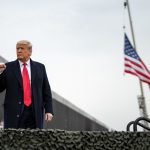The latest testimony from the acting director of the Secret Service has exposed what many have suspected for some time: Despite the trillions spent on national security since 9/11, the government’s ability to communicate effectively is still stuck in the Dark Ages. Catherine Herridge, a seasoned Capitol Hill reporter, highlighted these astonishing comments during a Senate committee hearing aimed at unraveling the security failings that allowed a gunman to get alarmingly close to former President Donald Trump. Apparently, local authorities couldn’t even give a heads-up about a guy on a roof until it was too late, proving that “siloing” information remains a top pastime in government.
Acting Director Robert Rowe seemed to acknowledge that when it comes to responding to threats, there’s been little improvement. During his testimony, Rowe conceded that local law enforcement had a 30-second window before they communicated with the Secret Service regarding the impending danger. One has to question what kind of reaction time that is when the safety of a former president hangs in the balance. In a world with instant communication, it’s a comedy of errors to think a simple “man with a gun” message could get stuck in some bureaucratic limbo.
Catherine Herridge identifies BOMBSHELL…
👇👇👇👇 https://t.co/iKC01niIBZ— TL Rttn (@rttn_tl) August 1, 2024
As if the situation couldn’t sound more ridiculous, Rowe also revealed that the Secret Service was virtually powerless against a drone operated by the shooter, Thomas Matthew Crooks. For all the military technology and high-tech equipment available, it turns out that on the day of the attack, their counter-drone system experienced “technical difficulties.” Crooks had his merry drone festival between 4:50 PM and 5:01 PM, meaning the Secret Service was as useful as a screen door on a submarine. Maybe investing in a few more backup batteries would be wise in future security measures.
Senator John Cornyn pointed out the absurdity of this scenario by asking whether Crooks could’ve had an easier time attempting his hit job with a drone instead of an AR-15 rifle. Rowe admitted that drones represent a “potential threat vector.” It raises the question: If killing a president is as simple as flying a drone rather than lugging around a rifle, then what’s the Secret Service doing, and why hasn’t it modernized its approach? It seems like the only ones outgunning threats here are the drones flying in the sky.
Interestingly, Rowe has a history that connects him to security requests during Trump’s campaign. He has previously denied additional security measures, despite Trump receiving numerous death threats. In a breathtaking twist, the interim FBI Director, Kimberly Cheatle, recently chose to throw local authorities under the bus for this incident, right before leaving her post. Crooks’ motivations are still murky, but despite being a registered Republican, friends remarked on his anti-establishment leanings. Who would’ve thought that ideology could sometimes be as unpredictable as government efficiency? It appears the real problem isn’t just bad actors; it’s a system that can’t keep pace with the threats of the modern world.




